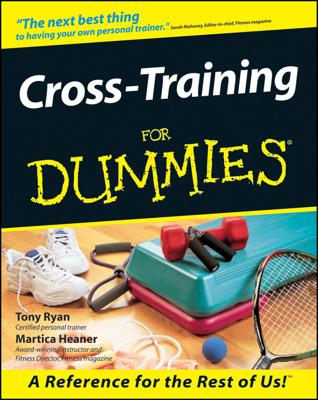Step aerobics is a choreographed routine of stepping up and down on a rectangular, square, or circular platform (or, in the case of BOSU, a domed, flexible apparatus). Many classes combine step aerobics with body sculpting, jumping rope, sliding, or funk aerobics.
Consider the following if you are interested in taking a step aerobics class:
What step aerobics does for you: Gets your heart and lungs in shape and tones your tush. Step aerobics is a terrific cross-training activity for runners, cyclists, and walkers. BOSU is also exceptional at developing balance and flexibility.
The exhaustion factor: Depends on the choreography, the pace, and the height of your step. In general, the more complex the choreography and the higher your step, the tougher the workout. Never use a platform so high that your knee is higher than your hip when you step up. In some classes, you hold weights while you step.
The coordination factor: High. Even basic classes can confound the choreographically challenged. Higher-impact step and BOSU require major amounts of coordination.
Who digs step aerobics: Most everyone. Step classes and BOSU draw a lot more men than do regular aerobic classes. And women like step because it’s such a great toner. However, if you have back, knee, or ankle problems, you may be better off with another type of class — or at least, keep the platform very low.
What to wear: Some shoe manufacturers make shoes specifically for stepping. These shoes have sturdy ankle support, are a bit stiff along the sides, and have plenty of flexibility at the ball and cushioning at the heel of the foot. However, a good pair of aerobics shoes with similar features will suffice. Just don’t wear running shoes. You may stumble if the waffle pattern on the bottom of the shoe catches on the top of the platform.
Signs of a sharp instructor: Good instructors ask whether anyone is new to step or has any back, knee, or ankle problems. They accommodate newcomers by going over the basics, such as how to place your foot on the platform. Instructors also alert you before every transition — step jargon for any type of change in the routine (such as changing directions). In addition, good instructors make sure that you don’t lead with the same foot for more than a minute or two. The music shouldn’t be so fast that you have to rush your movements to keep up. Instructors should include calf stretches at the end of the class.
Tips for first-timers: No matter how fit you are, always start with the lowest step — don’t put any risers underneath. Don’t feel intimidated if the guy next to you looks like he’s standing on a coffee table. Also, if you find yourself getting confused or behind, forget about the arm movements and concentrate on the footwork for a little while. When step workouts start to feel easy, consider adding a riser.

